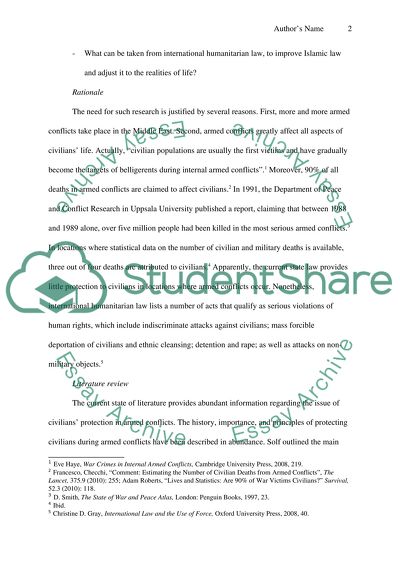Cite this document
(“Protection of Civilians in Armed Conflicts: a Comparative Study of Research Proposal”, n.d.)
Protection of Civilians in Armed Conflicts: a Comparative Study of Research Proposal. Retrieved from https://studentshare.org/law/1431440-protection-of-civilians-in-armed-conflicts-a
Protection of Civilians in Armed Conflicts: a Comparative Study of Research Proposal. Retrieved from https://studentshare.org/law/1431440-protection-of-civilians-in-armed-conflicts-a
(Protection of Civilians in Armed Conflicts: A Comparative Study of Research Proposal)
Protection of Civilians in Armed Conflicts: A Comparative Study of Research Proposal. https://studentshare.org/law/1431440-protection-of-civilians-in-armed-conflicts-a.
Protection of Civilians in Armed Conflicts: A Comparative Study of Research Proposal. https://studentshare.org/law/1431440-protection-of-civilians-in-armed-conflicts-a.
“Protection of Civilians in Armed Conflicts: A Comparative Study of Research Proposal”, n.d. https://studentshare.org/law/1431440-protection-of-civilians-in-armed-conflicts-a.


